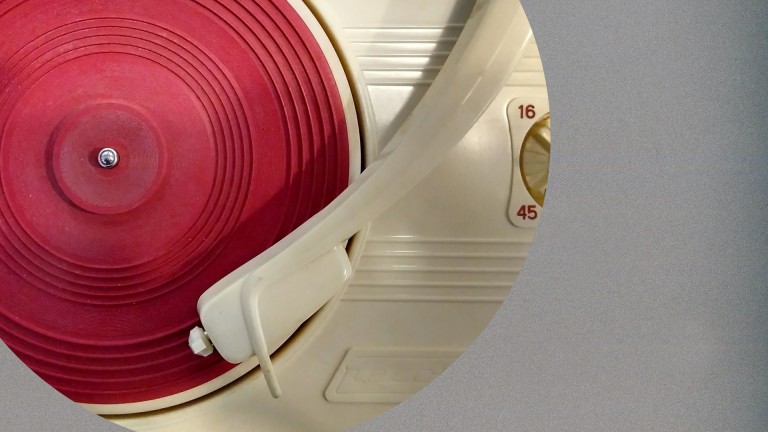From 1961 to 1970: The youthful explosion of the urlatori (screamers)
Beat and the new generation rewrote languages and customs. The initial carefree spirit transformed into a collective conscience and left space for the birth of the politically committed song and new musical languages.
In the wake of American rock'n'roll, beat was born in Great Britain, and with it came a cultural evolution that influenced not only music, but all areas of communication in the 1960s.
The films “I ragazzi del juke-box” and “Urlatori alla sbarra”, both by Lucio Fulci, interpreted the nascent musical movement, of which Gianni Morandi was to be one of the major exponents together with the leading player Celentano, Rita Pavone and many others.
The beat sounds contained euphoria and enthusiasm. They led to the formation of a new, unbridled youthful identity.
Many groups were founded, often inspired by foreign artists. The Bolognese musical movement grew and grew. Just to mention a few, there were the Jaguars, the Judas of Martò, the Meteors of Jimmy Villotti, the Golden Rock Boys of Andrea Mingardi, Babbo e Gli Sguardi, Les Copains, Silvano Silvi e Gli Erranti, the Kriminals, I Sagittari and, lastly, Le Cinque Lire, in which converged Gaetano Curreri, Iskra Menarini and the guitarist Ricky Portera, who accompanied Vasco Rossi in his first concerts.
It was this city environment of positive ferment that brought to the fore some of the most successful artists on the national panorama. In 1960, Lucio Dalla appeared as clarinettist, winning the European Jazz Festival with the Rheno Dixieland Band. He then joined the Flippers, also as a singer, and was helped towards a solo career by Gino Paoli. His first participation in the 1964 Cantagiro was disappointing, but in 1966 he made his Sanremo debut “Pafff... Bum”, together with the Yardbirds. The song was included in his first album, “1999”, made with Gli Idoli, a Bolognese band that would accompany him until 1972, when he began his collaboration with the poet Roberto Roversi.
In 1962, Gianni Morandi made his debut with “Andavo a cento all'ora” and “Fatti mandare dalla mamma a prendere il latte”. In 1962 and 1964, he published “In ginocchio da te”, “Non son degno di te” and “Se non avessi più te”, triumphing at festivals and in the cinema. An evolution in his artistic image, and an increasingly mature career path, led to the publication of “C'era un ragazzo che come me amava i Beatles e i Rolling Stones”, dedicated to the Vietnam war. A politically committed narration that would also be shared by the Pooh. Born in 1966 as a successor to the Bolognese Jaguars, in that same year they presented “Brennero '66”, part of their first album “Per quelli come noi” and referring to terrorism in Alto Adige.
Italian beat felt the need to narrate new themes, more politically committed and aligned with the youth movements that called into question war, labour, rights and society: themes that were to inflame the 1970s, also in Bologna.
1967 saw the birth of Il Canzoniere delle Lame, founded by Janna Carioli and Gianfranco Ginestri. It brought together the culture of political and traditional songs linked to rice-gatherers, partisans and popular culture. Their first LP, “Canti di protesta”, was published in 1970 and marked the beginning of an intense national and international career that lasted until 1987.
Over thirty years later, in 2019, the documentary film “Gli anni che cantano”, was dedicated to the story of the group. Directed by Filippo Vendemmiati, it also involved Alberto Cazzola of Lo Stato Sociale and Giacomo Gelati of Le Altre di B.
Also in 1967, Francesco Guccini made his debut with the album “Folk beat no. 1”, offering an important contribution to the relationship between folk and the nascent songwriters’ movement. Guccini proposed a new approach, closer to the American example of Bob Dylan. His, too, was an alternative art, like beat, but introspective. Listening was the sole protagonist.
These were the years of the Bologna eating-places, which became areas for discussion, diversion and culture in which music and cabaret had a primary role. In 1970, Guccini himself opened the Osteria delle Dame, together with Padre Michele Casali. It was to be a cultural salon of national importance for many years. A similar role was played by the Trattoria Da Vito, in the Cirenaica of Via Paolo Fabbri, where Dalla and other artists gathered with Guccini and where Luca Carboni was born as an artist. Also active in the city were Club 37, the Osteria dei Poeti and many others.
Bologna had long welcomed international artists, including the Platters, Paul Anka and other great artists engaged for the various editions of the Jazz Festival organized by Alberto Alberti and Cicci Foresti. The concerts by the Rolling Stones in 1967 and Jimi Hendrix in 1968 at the PalaDozza introduced the cruder sonorities influenced by blues.
Rock was more than beat and its distorting lens proposed new shades of musical expression. Beat had to come to terms with this change, not only in Bologna, and not only in Italy.
Listen to the playlist

